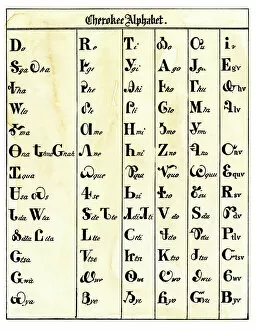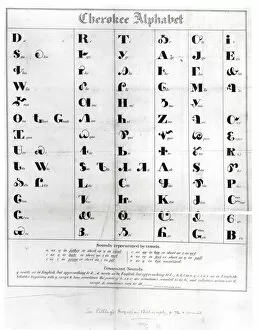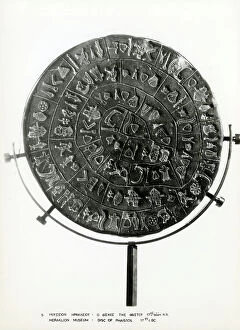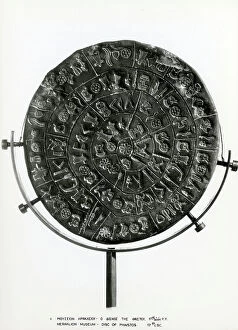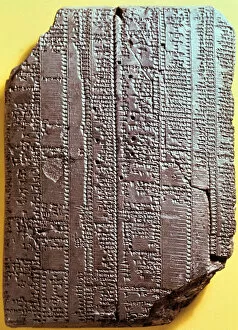Syllabary Collection
The syllabary, a system of writing that represents syllables rather than individual sounds or letters
For sale as Licensed Images
Choose your image, Select your licence and Download the media
The syllabary, a system of writing that represents syllables rather than individual sounds or letters, has a rich history spanning across different cultures and time periods. One notable example is the Cherokee Alphabet, developed in 1821 by Sequoyah, a Native American scholar. His dedication to creating an efficient writing system for his people resulted in the creation of this unique syllabary. In 1835, Pendeltons Lithography produced an engraving showcasing the beauty and intricacy of the Cherokee Alphabet. This lithograph served as both a visual representation and educational tool for those interested in learning about this innovative writing system. Another fascinating artifact is The Phaistos Disc, discovered on the Greek island of Crete. Dating back to around 1700 BC, this disc features mysterious symbols arranged in a spiral pattern. Although its exact purpose remains unknown, some believe it may be an early form of syllabic script. Similarly, a Babylonian clay tablet from the 7th century BC displays another example of ancient syllabaries. This tablet showcases rows upon rows of carefully inscribed characters representing various syllables. It serves as evidence that even thousands of years ago, civilizations recognized the importance and power behind organizing language into distinct units. Sequoyah's dedication to preserving his culture through written language is evident in images depicting him working diligently on his alphabet. These wood engravings from 1870 capture his determination and passion for ensuring future generations could communicate effectively using their native tongue. From ancient times to modern innovations like Sequoyah's Cherokee Alphabet, these examples highlight how humans have continually sought ways to express themselves through written communication using various forms of syllabaries throughout history.

